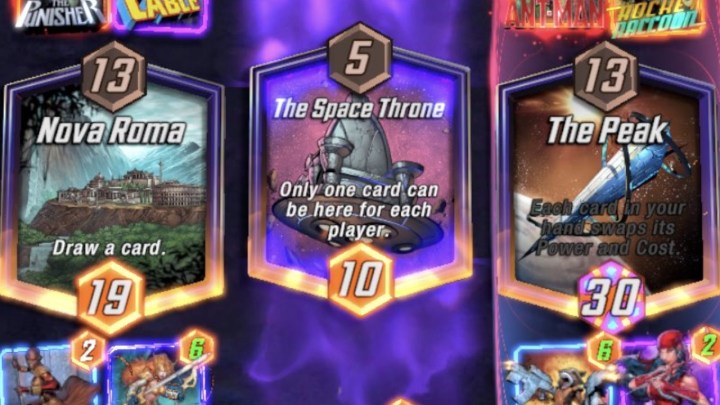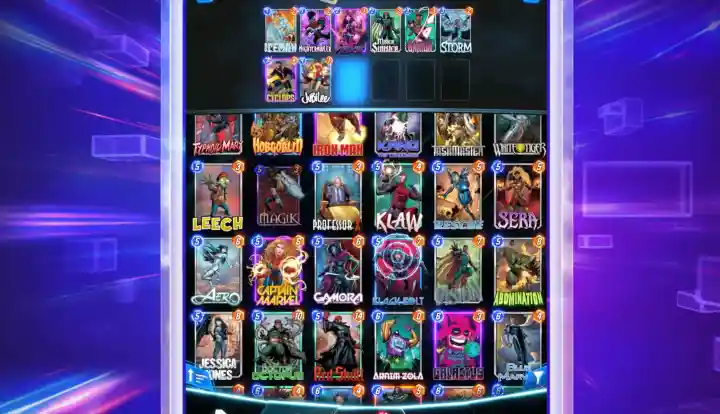Any game with Marvel characters in it is going to draw some attention. Add in the fact that this one, Marvel Snap, is free-to-play on mobile and PC and an even bigger crowd is going to at least want to give it a shot. However, unlike other Marvel games like Marvel’s Spider-Man or Marvel’s Avengers, Marvel Snap is a collectible card game and not an action title. That alone might make a few people second-guess playing, but Marvel Snap is one of the most accessible deck-building games out today.
Featuring all the iconic heroes from the Marvel universe, Marvel Snap is a quick, fast-paced, and easy-to-learn card game. However, just because the rules are easy to understand doesn’t mean that winning is just as easy. There’s plenty of depth and strategy to learn to best your opponents. If you want some early tips and tricks to up your game in Marvel Snap, we’ve assembled the best of the best.
Further reading
The basics

Card games can be some of the more complicated games out there, but Marvel Snap keeps things fairly basic. Each game only lasts for six turns, and each player only has a deck of 12 cards. Unlike most card games, your goal isn’t to attack the opponent, or even their cards necessarily, but instead, capture and hold Locations. You each take turns placing cards of different power levels on Locations. By the end of the final round, whoever holds two out of the three Locations will win the game. Simple, right?
How to read cards

Aside from the great artwork on the cards, they have some very important information on them you will need to learn.
The first thing to note is the number on the top left of the card. This is how much Energy that card costs to play, ranging from one to six. Just as in Hearthstone, you start each game with one Energy and gain an additional one on every following round — on round two you will have two Energy, and so on. The number on the top right of the card is the Power. This is the next most important number to note since Power will determine who wins a Location. Power numbers can also be impacted by other things, such as the type of Location the card is played on.
Finally, pay attention to your On Reveal and Ongoing effects.
On Reveal is a special effect your card will do upon being played, assuming all conditions are met. These won’t be permanent, though.
Ongoing effects do last through the entire game and can affect more than just the card they’re attached to. For example, Blue Marvel adds +1 Power to all ally cards for the rest of the game, no matter where they’re placed.
How to win Locations

The three Locations in Marvel Snap will appear one at a time, and there can be a maximum of four cards in any one Location. Locations also come with random effects or requirements on cards placed there that can be good or bad, such as reducing all cards’ Power every turn or only allowing cards that cost four or more Energy to be played there.
The first Location will be on the left side, followed by the middle on turn two, and the third on turn three. You can place cards on Locations before they a revealed, which also makes it so those cards are not impacted by that Location’s effect. This can be good or bad depending on the effect it happens to end up being.
By playing your cards on a Location, you combine their Power into a single total. Whichever player has the highest total Power on a Location when the final turn ends wins that Location. Whoever wins two out of the three Locations is the victor.
Keep your deck simple

Marvel Snap can get complex, but early on it is better to keep your deck tight and focused. The less time you spend reading and trying to remember what cards you have, what they do, and which ones you want to use together, the better. While the game already has hundreds of cards, they are divided into pools that pace out how many you need to pick between at a time.
Our best advice is to start off by making sure your deck is a good mix of low Energy cost cards and fewer higher ones. You start off with just three cards in your hand, so you want to minimize the chances of not being able to play any cards on that first turn.
You should also try and choose cards that are more versatile rather than focused. Examples of this are Nightcrawler, who can move between Locations and Angela who adds +2 Power when another card is placed in the same Location.
Focus on two Locations

As mentioned when covering the basics of Marvel Snap, the winner is determined by whichever player wins two out of the three Locations that appear in the match. Rather than spread your forces, and Power, out across all three in hopes of hedging your bets on winning, it is much more crucial to not spread yourself out too much. The downsides are that you will obviously have lower Power ratings by putting cards into three places rather than two, but also miss out on stacking bonuses from Location effects and any On Reveal and Ongoing effects of your cards.
Stick to pinning down two locations, and only put cards in that last spot if you have nothing else better to do that turn.
Only Snap if you’re confident (or bluffing) and don’t be afraid to retreat

Finally, there’s the Snap mechanic of Marvel Snap. Unlike the Thanos snap, this isn’t some ultimate weapon that will win you the game. At the top of the screen in every match, you will see a number of Cosmic Cubes up for grabs for the winner. This starts out as two, but Snapping will double it to four. However, your opponent also can Snap, making the maximum reward reach as high as eight Cosmic Cubes.
So, what’s the downside to Snapping? That number of Cosmic Cubes isn’t just how much you stand to win, but also how much you could potentially lose as well. If you lose a game after Snapping the number up to four and lose, you will end up costing yourself four Cosmic Cubes instead of just two. That makes this a risky play to do early in the game, but also something to use tactically.
If you’re certain you’re on the way to a victory, there’s really no reason not to Snap. This can be especially effective after you exploit an enemy’s mistake or otherwise overwhelm them with a good play of your own. Snapping can often lead to the opponent retreating to avoid losing more than they already were.
Using that same logic, players can use Snaps as a bluff tactic to try and scare their opponent into thinking they’ve got more going on than they actually do. This is risky since they can call your bluff, but certainly a tool to whip out when things appear to be at a stalemate.
Finally, if your opponent Snaps and you just know there’s no coming back, don’t be afraid to retreat. While you do instantly lose the match, you are only ever penalized a single Cosmic Cube. It’s always better to cut your losses and start a fresh game than stick out a losing battle.



